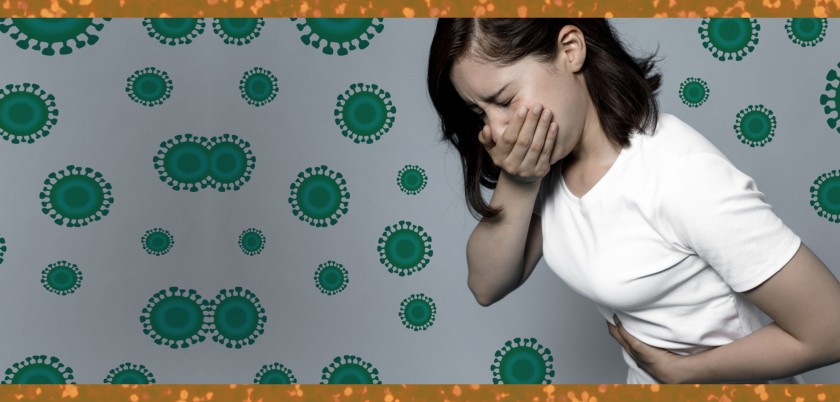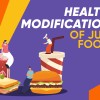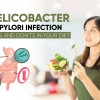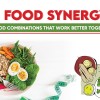
TYPHOID- KNOW IT AND CURE IT
Typhoid is an infectious disease that is followed by a fever of short duration. The causative organism behind typhoid is rod-shaped bacteria: Salmonella typhi.
Prevention tips for typhoid:
Eat foods that have been thoroughly cooked and that are still hot and steaming.
Ensure that cooked food is covered to protect it from flies.
Avoid raw vegetables and fruits that cannot be peeled. Vegetables like lettuce are easily contaminated and very hard to wash well.
When you eat raw fruits or vegetables that can be peeled, peel them yourself. Wash your hands first. Do not eat the peelings.
Avoid foods and beverages from street vendors. It is difficult for food to be kept clean on the street and many travelers get sick from food bought from street vendors.
Treat all drinking water by bringing it to boil for 1 minute or using aqua-treated water.
Ask for drinks without ice unless the ice is made from boiled or chlorine treated water.
Practice hand washing with soap and running water before food preparation and eating.
Personal hygiene is very important.
(WHO, July 2011)
Source of infection:
The source of infection is the stools and urine of the patients of typhoid or carriers of the disease. Drinking water or food gets contaminated with the intestinal contents of the patients or ‘carriers’ via flies and this often transmits the disease.
- Vegetables that grow in sewage farms or washed with contaminated water are a positive health hazard.
Diet therapy in typhoid:
High calorie, high protein, high carbohydrate, low fat, high fluid, low fibre and bland diet is recommended.
“Feed the fever”
The body’s metabolism sets into action in fever. For every degree celsius rise in temperature, BMR increases by 13 %. This is because of the overactive immune system of the body. This creates the need to apply the age-old-adage “Feed the fever”. Fever and related complications can be managed with a high calorie diet.
Consistency of diet:
Begin with a clear fluid diet, followed by a full fluid and semi solid diet. Fluid diet doesn’t fulfill the requirements of high calorie and high protein, so as the patient improves, shift to soft diet.
Role of liquid consumption:
Fever in typhoid disturbs the water balance. So liquid diets helps to maintain the water and electrolyte balance in the body. Fluids are needed to compensate for the losses in sweat and also to produce more urine to excrete out the wastes from the body. Have a liberal amount of beverages, soups, fruit juices, water, coconut water, buttermilk, glucose etc.
- Have a daily consumption of 2.5-3 litre fluid.
Disadvantages of consuming too many fluids:
But it is not recommended to completely focus on the fluids. They improve the electrolyte balances in the body, but add on to a few troubles too:
They add to bulk in the diet, but not maintaining the needs of a high calorie and high protein diet.
Sometimes, excess liquids may cause abdominal distension.
Also, a few patients experience less nausea, vomiting and anorexia when having solid foods over liquid foods.
Reason for having an easily digestible soft diet:
Use soft foods of regular consistency. Bland, easily digestible food should be used to facilitate digestion and rapid absorption.
Bland diet:
“Bland diet is a diet which is mechanically, chemically and thermally non-irritating.
Mechanically irritating
Typhoid fever should be followed by the intake of diet that is mechanically non-irritating i.e. low fibre diet. The intake of indigestible carbohydrate such as whole grains and most fruits and vegetables should be avoided.
Chemically irritating
Chemically irritating foods are those that have stimulatory effect on gastric secretion such as meat extracts, caffeine, alcohol and spicy foods.
These are to be avoided by a typhoid patient.
Thermally irritating
Avoid foods consumed at extreme of temperature such as very hot or iced liquids.
Feeding intervals:
Small quantities of food at intervals of 2-3 hours permits adequate nutrition without overtaxing the digestive system at any time. Preferably, have three meals with a midnoon feed and bedtime feed. Poor appetite of the patient can be overcome with a mixture of fluid diet and soft diet.
Foods to be included:
- Fruit juices
- Glucose in water/juice
- Coconut water
- Kanji
- Dal water
- Barley water
- Ragi malt
- Milk, milk shakes ( only if no diarrhoea)
- Custard, kheer
- Thin dal
- CurriesEggs (but not fried), Baked fish, Minced meat
- Curd
- Cottage cheese
- Refined, finely ground Grains
- Gruels
- Steamed vegetable juices
- Milk puddings
- Vegetable puree
- Banana
- Mashed potato
- Rice
Foods to be avoided
- Butter, Ghee and Vegetable oils
- No irritating fibre foods
- Chillies and spices
- Pickles
- Alcohol
- Strong coffee
- Cabbage and capsicum (cause gas formation)
- Rich pastries
- Fried foods
- Cream soups
- Nuts and oilseeds
- Coarse cereals and breads
- Tough meats
The final word
Typhoid can transform into a life-threatening illness if neglected. Go for a high calorie and high protein diet, balancing the nutrients in adequate amounts. Have liberal intake of fluids. Make the meals small, eating at a regular 2-3 hour interval.






